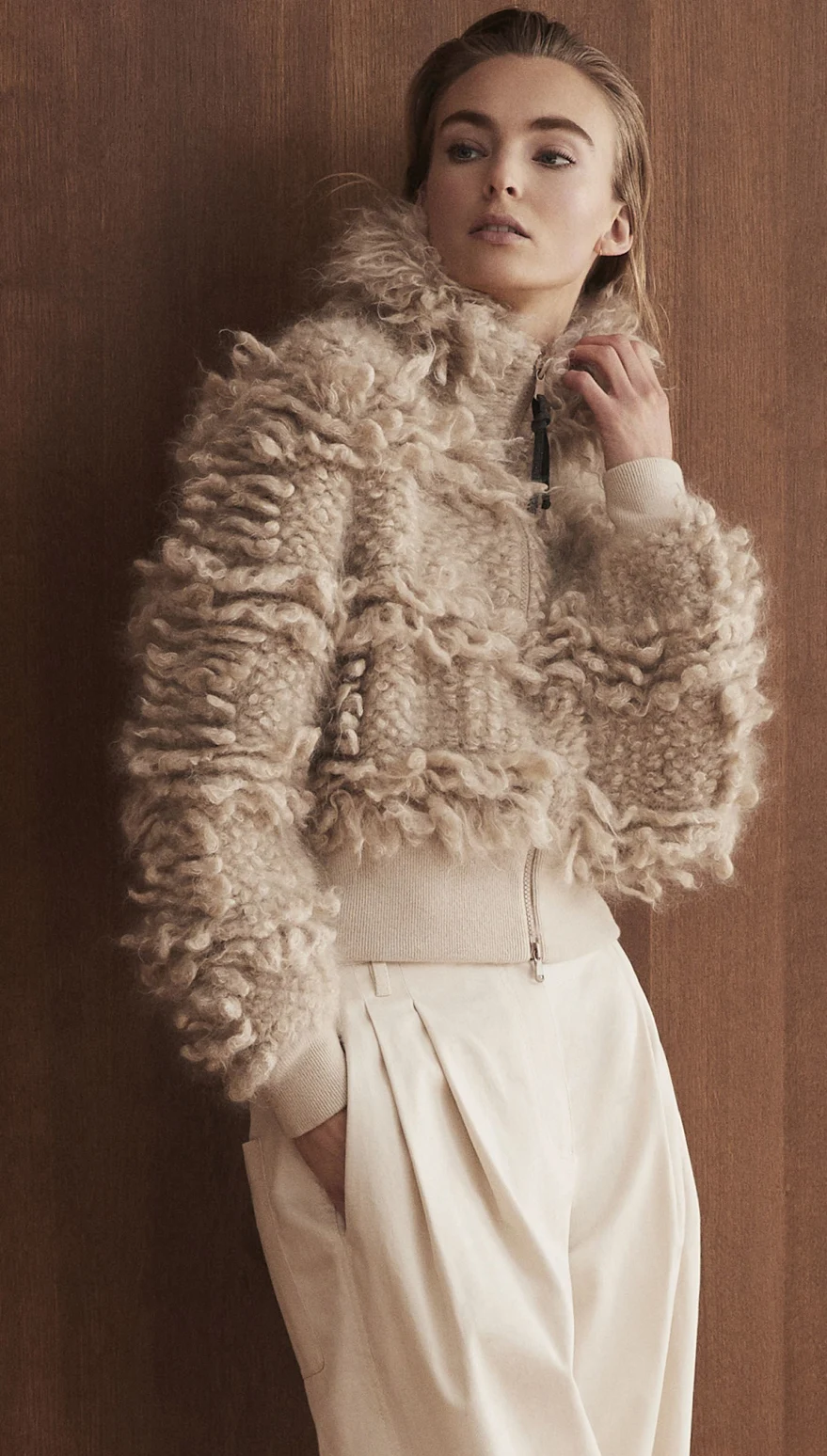“Before you leave,” said Brunello Cucinelli, “you really should try some rigatoni.” The sprawling buffet of regional specialities—culturally and regionally specific masterpieces of Italian cuisine, not ersatz foreign appropriations à la Chicago-style pizza or vodka sauce—that Cucinelli lays on at this presentation is almost as delicious as his cashmere is lustrous.
His clothes are also profoundly localized: every stitch and seam steeped in the arcadian corporate culture he has built in Solomeo, Italy. Yet that's not to say Cucinelli doesn’t have his own more widely foraged references. “When I was young, Jil Sander was really my reference. And Yohji Yamamoto, Giorgio Armani . . . I have followed their steps.”
He said: “I think that after three or four years with a lot of pattern and color, there is a desire to go back to solids. . . . We all need harmony as human beings, and this harmony, I think, is also mirrored in clothing.” Ever-accented by his Monili-chain, sparkle-beaded, signature motif, this was a collection of long-cooked, lightly tweaked, richly flavored, slow womenswear that hailed unmistakably from the Cucinelli Denominazione d’Origine Protetta. (vogue.com)





His clothes are also profoundly localized: every stitch and seam steeped in the arcadian corporate culture he has built in Solomeo, Italy. Yet that's not to say Cucinelli doesn’t have his own more widely foraged references. “When I was young, Jil Sander was really my reference. And Yohji Yamamoto, Giorgio Armani . . . I have followed their steps.”
He said: “I think that after three or four years with a lot of pattern and color, there is a desire to go back to solids. . . . We all need harmony as human beings, and this harmony, I think, is also mirrored in clothing.” Ever-accented by his Monili-chain, sparkle-beaded, signature motif, this was a collection of long-cooked, lightly tweaked, richly flavored, slow womenswear that hailed unmistakably from the Cucinelli Denominazione d’Origine Protetta. (vogue.com)







Comments
Post a Comment